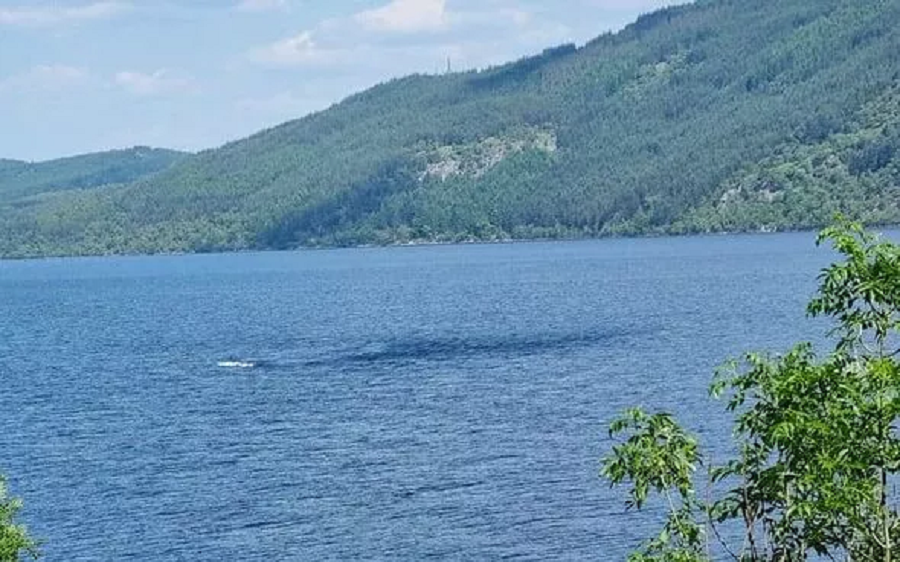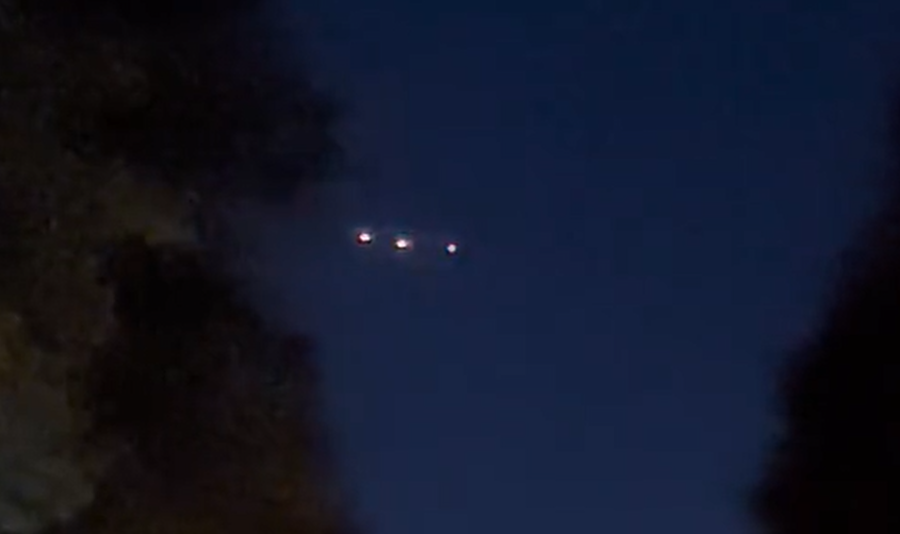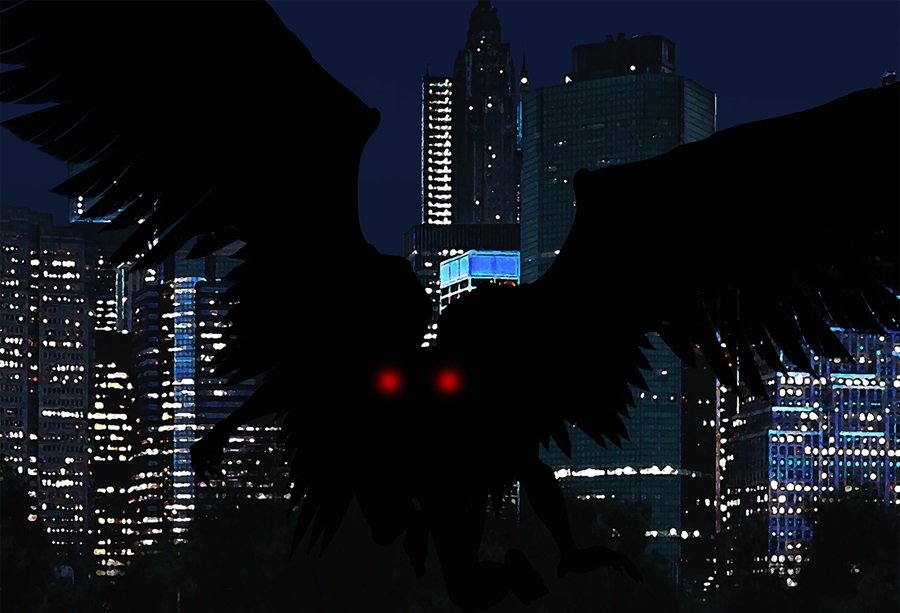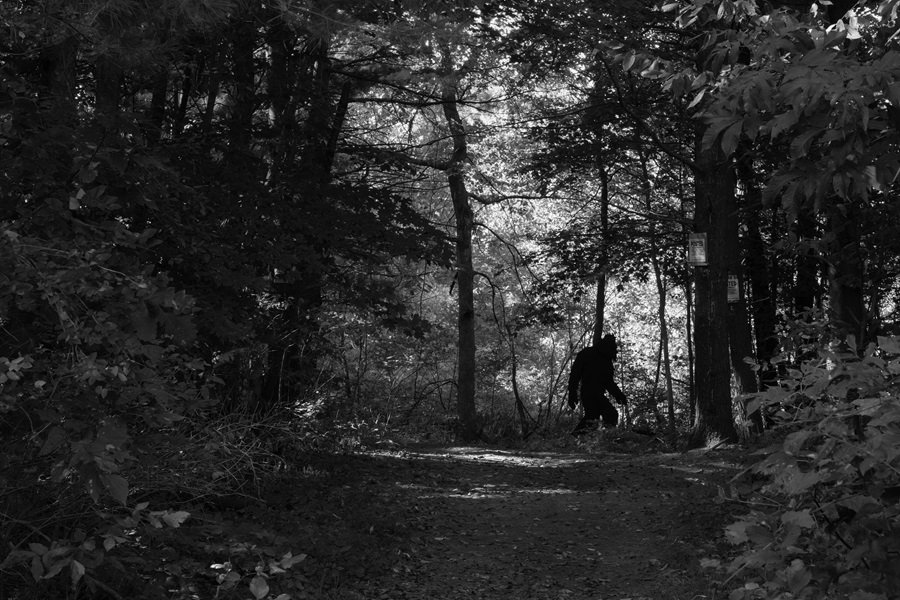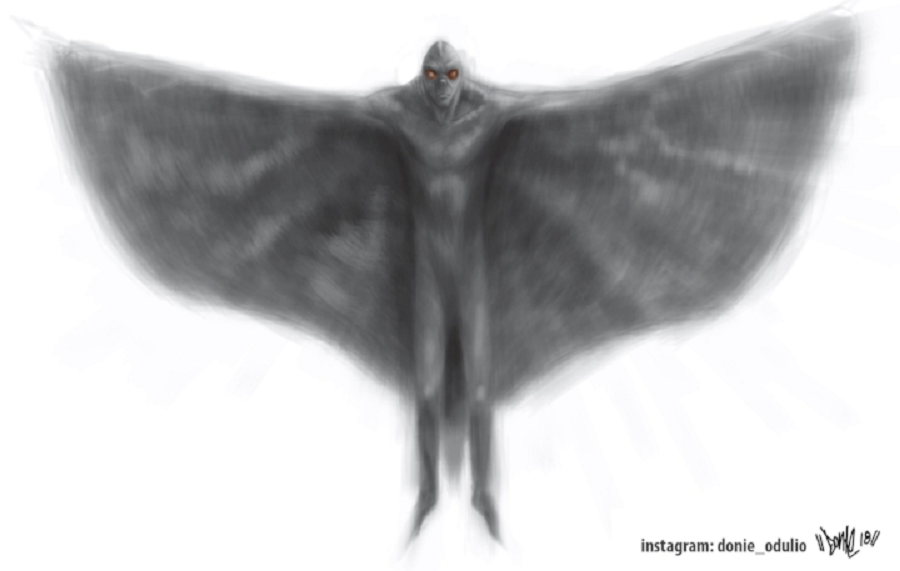Cruise Director Captures "Eye-Catching" Sonar Image of Large Object in Loch Ness
The sonar image captured at Loch Ness by Cruise Loch Ness director Ronald Mackenzie. The anomalous object can be seen in a vallery near the bottom of the loch. (Ronald Mackenzie)
Updated 11/9/20
49-year-old Cruise Loch Ness director Ronald Mackenzie captured a mysterious 15-to-20-foot-long object 500 feet below the surface of Scotland’s Loch Ness while leading a tour on the loch at the end of September.
Mackenzie—a 30-year veteran of the loch—caught the object on his sonar at 4:30 pm on September 30th during the final tour of the day aboard his two-year-old catamaran, The Spirit of Loch Ness.
“It was a bit of a dreich day and we only had 12 passengers on board. I was skippering because the usual skipper had a day off,” Mackenzie told The Inverness Courier. “We were at our halfway point off Invermoriston, where we turn around. The water is 189 meters (620ft) deep there. The passengers were quite excited because we had just spotted a sea eagle, but then I saw on the sonar something more eye-catching."
“It was right bang smack in the middle of the loch at about 170 meters (558ft) down," he continued. "Because the boat was doing 10.7 knots it was unable to detect if it was moving or stationary, but it was big—at least 10 meters (33ft)."
The sonar manufacturers have since informed Mackenzie that the contact was of a single, animate object, estimated to be between 15 and 20 feet long.
According to Mackenzie, "The contact lasted ten seconds while we passed over. I’ve been on the loch since I was 16 years old and I have never seen anything like it. We have had contacts in the past, but nothing like this. We have real state-of-the-art sonar on the new boat, it doesn’t lie. It can’t lie. It captures what’s there. I’ve always got my eyes glued to the screen, but I’ve never seen anything like this. One of the guides onboard told the passengers we had had a strong contact. They had been watching the sea eagle, unaware of what was below."
The experienced sailor freely admitted that he believes something unusual dwells in the murky depths of Loch Ness.
“I believe there’s something in the loch that nobody knows what it is and we should leave it alone," Mackenzie said. "I’ve always thought there was something there, be it a big eel or a sturgeon or a big fish of some sort—or even Nessie."
For someone like Mackenzie, who combines years of boating on the loch with a belief in the possibility that it might hold a monster, this sonar return has been particularly impactful.
“It’s blown me away," he said. "I’ve been looking at it all night and all morning and it’s something big.”
Sonar expert Craig Wallace—a marine robotics senior application specialist with Kongsberg Maritime AS, who has surveyed Loch Ness half a dozen times and four years ago discovered the lost model of Nessie used in the 1970 film The Private Life of Sherlock Holmes—said, “There is no question there is a real, clear and distinct contact. It is a 100 percent real target. It is 100 percent genuine. I do believe large sturgeon do enter Loch Ness, so it may be a sturgeon or a small shoal of fish."
For Nessie investigator Steve Feltham, this latest sonar image is "extremely exciting."
"There is no comparison in clarity for the evidence that we have been looking for—that there are big animals swimming around in Loch Ness,” he said. “I have known Ronald Mackenzie for 30 years. He’s a Highland lad who does not seek publicity and shies away from the fanciful Nessie theories. He’s not somebody who would cry wolf—or Nessie—but within seven minutes of getting the sonar contact he messaged me and I said ‘wow.'"
“This is the most credible and compelling evidence in 30 years," Feltham, who set the world record for longest continuous vigil hunting for the Loch Ness Monster, continued. "I think it is the most crystal clear evidence and the least debatable piece of evidence. It is a big object 60 feet off the bottom. This is 100 percent genuine. If I was asked to pick the best ever sighting of Nessie, I would say this one and I would be willing to stand beside Ronald and say so. It is startling.”
As to what the sonar image shows, and what Nessie will ultimately turn out to be, Feltham isn't sure—although his opinion has changed over the years.
"When I first came I thought I was looking for a plesiosaur, then a Wels catfish—which it might be—and I’m currently reappraising the evidence,” he said. "The jury is out—but I definitely think Nessie is an animal. I think we are getting closer to finding the answer. The vast majority of sightings can be explained, but that still leaves those that can’t. The reality is people are seeing something that can’t be explained.”
One thing that Feltham is sure about, however, is that contrary to certain interpretations of a 2019 study conducted by Neil Gemmell—a New Zealand scientist and professor at the University of Otago—Nessie isn’t a giant eel.
It’s not going to be a dinosaur or a giant eel, but it’s something living in that loch that’s bigger than is currently known about,” he said. “A 12-year-old boy could tell you there are eels in Loch Ness. I caught eels in the loch when I was a 12-year-old boy.”
This is the second anomalous sonar return to be reported in Loch Ness since 2019, when boat skipper Mike Bell captured a mysterious object while piloting a group of tourists around the loch.
To report your own encounter with the impossible, reach out to us directly at the Singular Fortean Society through our contact page.
If you enjoyed this article and would like to support the Singular Fortean Society, please consider becoming an official member by signing up through our Patreon page—membership includes a ton of extra content and behind-the-scenes access to the Society’s inner workings.












